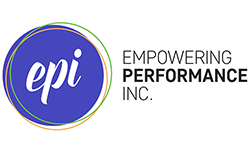"Can We Make One More Change?"
A new email pops into your inbox from a client. It goes something like this: You close the email and...
Begin your deep breathing exercises, trying to find your happy place.
Check project hours for status.
Rant.
Call the client back for details on the request.
Locate the change request form.
Let’s be honest. No matter the industry, if you create custom products for clients you are familiar with this type of communication. This situation is always tough. As the vendor, you want what’s best for the project; if adding a couple scenarios will enhance the instruction, then you want to find a way to make it happen. You also need to consider the value of executive-level buy-in, a healthy client-vendor relationship, and the impact on the potential for future projects.
But adding two new scenarios is no small effort for a budget-minded vendor. So, what should you do?
How you respond will vary. Your process may dictate that at a certain end-stage, a larger request warrants a change-request form and additional cost. Or, you may choose to go case by case, based on the customer and project. Let’s do a bit of a rewind. Is there something you can do to minimize this type of situation from occurring in the first place? Yes.
The client’s review team is essential.
Prior to an official project kickoff, you can direct the client to craft the right review team. This is an especially crucial step for new clients. Here are a few specific guidelines we use at EPI with our partners:
Ensure there is only one point of contact on the client’s review team. The client should make sure there is only one person managing their internal feedback process. This person should be responsible for consolidating feedback to avoid internal discrepancies. He or she should also have enough knowledge of the project to be able to manage the process by ensuring the review team’s feedback stays aligned with project outcomes (versus “nice-to-haves”). This role is key for staying on scope with budget and timeline.
Be realistic with time requirements. Be upfront with the team about the hours required for draft review. If not all the review team members will contribute equally to the review process, a RACI (Responsible, Accountable, Consulted, Informed) diagram may be useful. Additionally, we all suffer from planning fallacy more frequently than we’d like to think, so accounting for this in the initial scope is wise.
Understand the impact of team member size and status. Always account for the team size and unique leadership status of review team members. The reality? The larger the review team, the longer the review cycle. And ideally, one member of the review team should have authority to make decisions on behalf of directors and the C-suite. Acknowledge that legal representation is required for compliance and regulatory projects, and this will likely extend the review process. Be careful to budget for these circumstances from the beginning.
Make sure the team makeup stays consistent. From beginning to end, the review team should stay intact. Inserting new review members in the middle of the project creates confusion as they won't have had the benefit of earlier conversations and prior decisions.
Set clear expectations with a "feedback funnel."
But what good is a solid client review team without a clearly defined review process? During the project kickoff meeting, spend as much time as necessary to make sure your client understands the review process and expected feedback at each stage. In these conversations, we share a detailed "funnel" chart with our client.
In the initial stages of feedback, you’ll guide the client to provide larger feedback requests. By the later drafts, your client should focus on providing more refined, specific feedback. Here’s an example of what we find important to include for our elearning clients: During deliverable hand-off, it's wise to remind the client of the expected feedback.
The proper review team and an effective feedback funnel can streamline a project from start to finish. Yet, even if you implement these techniques and do an award-winning kickoff, it’s likely you’ll still receive the occasional late-change request. After all, projects are living creations and people get excited as they see a product unfold. (And that’s an awesome thing!)
But if you establish direct expectations upfront, you can steer clear of unnecessary road blocks, maintain a great relationship with your client, and avoid the need for too many deep breathing exercises.




